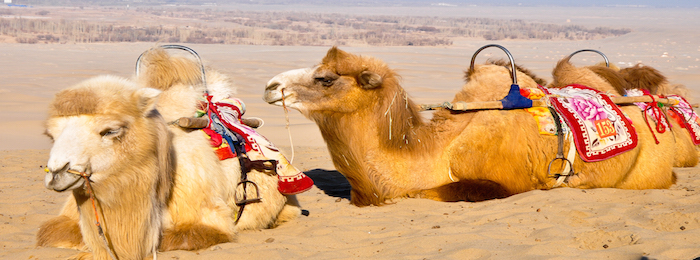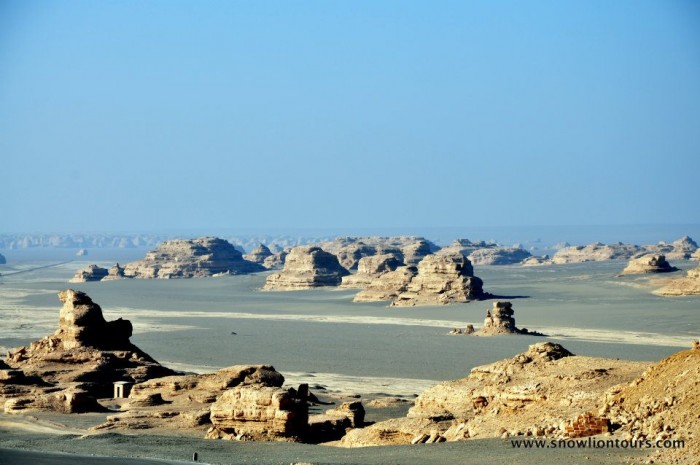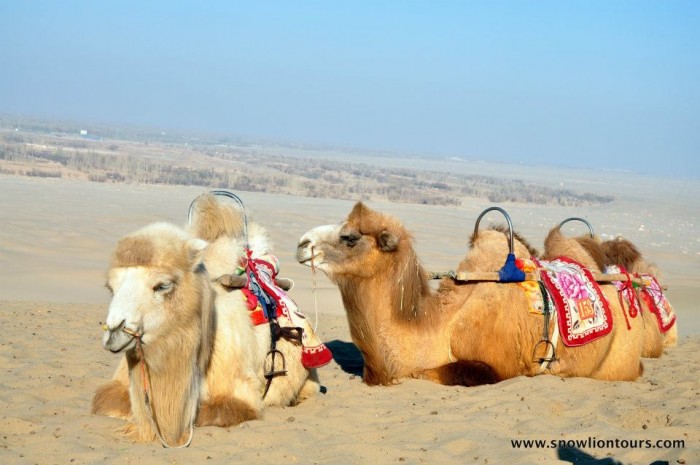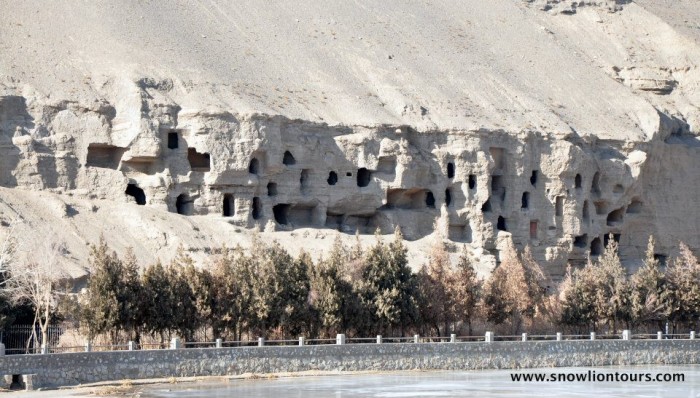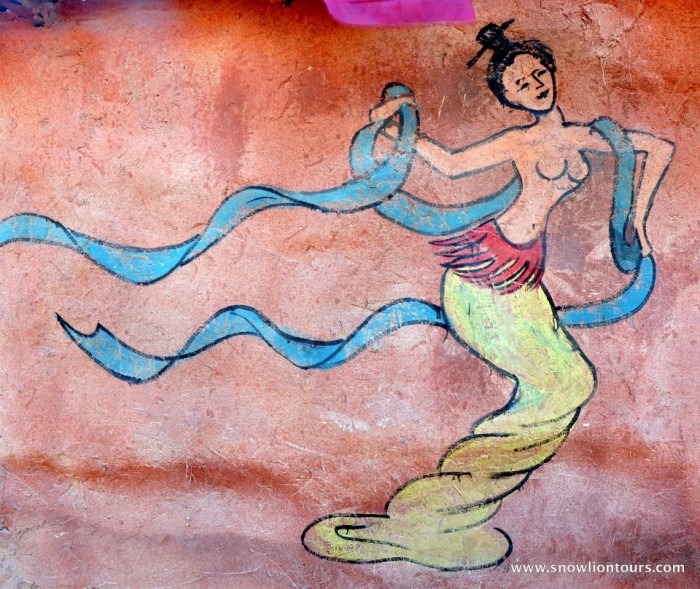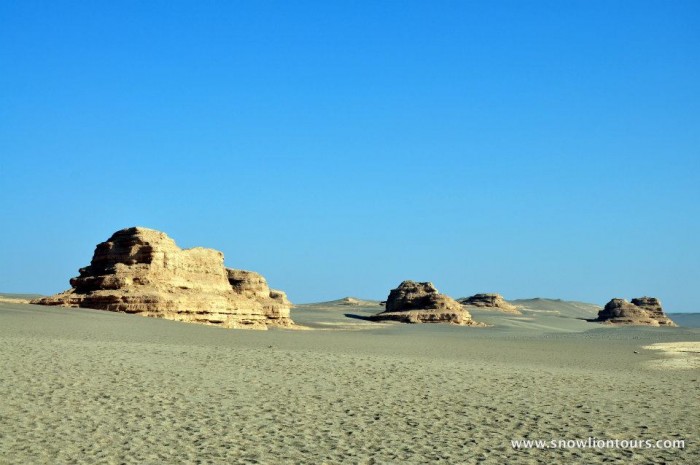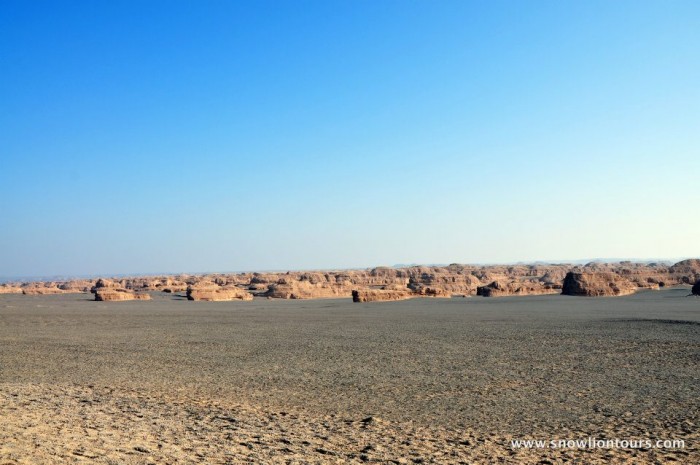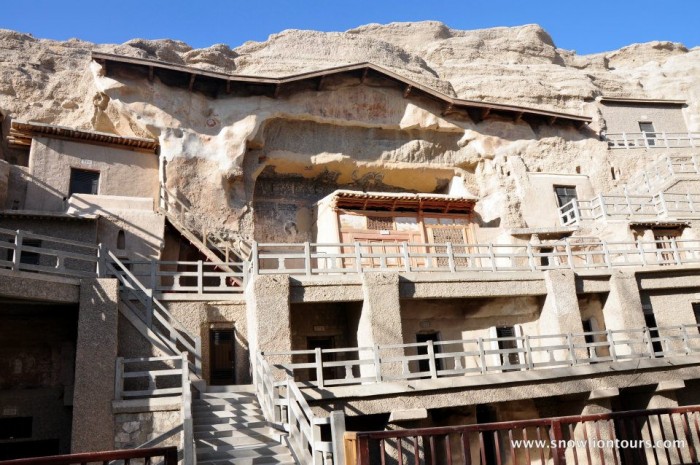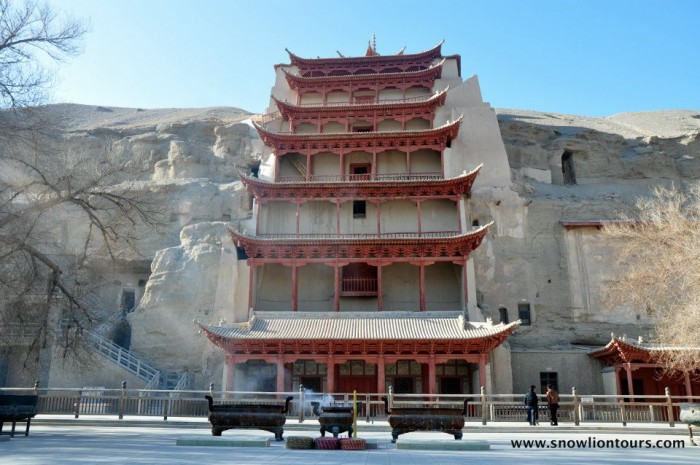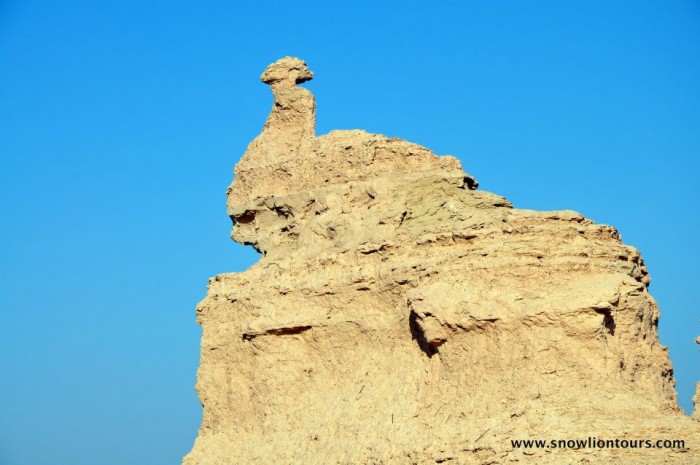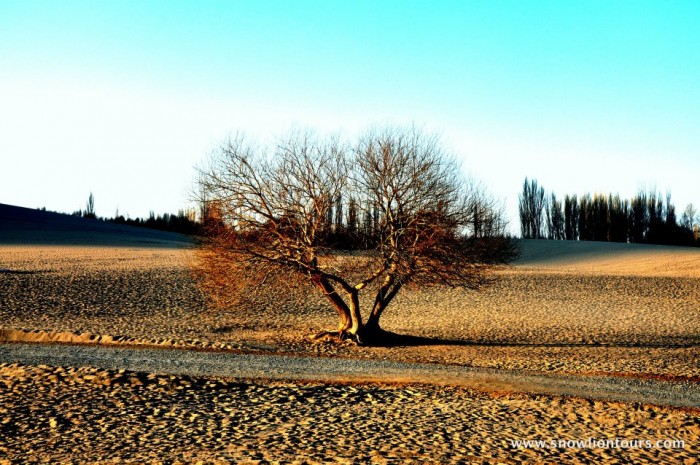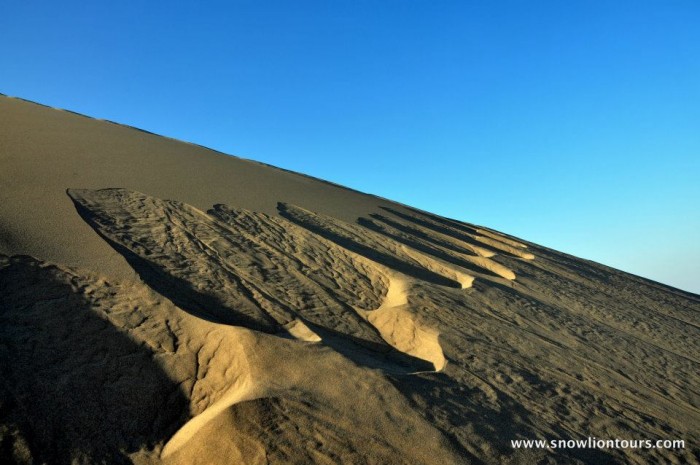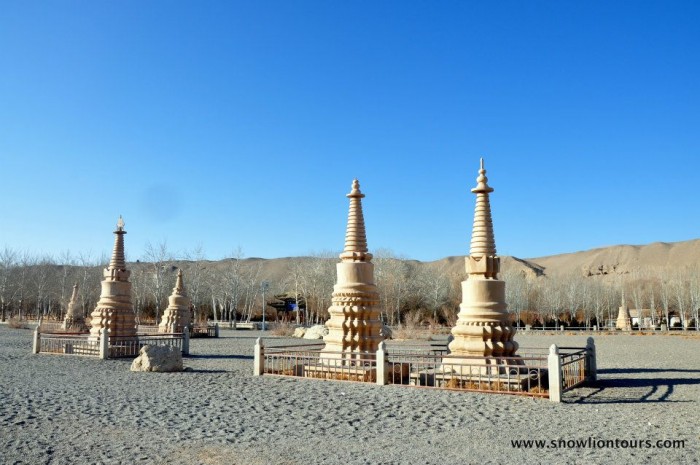The Silk Road, or Silk Route, is a series of trade and cultural transmission routes that once connected the east to west by traders, pilgrims, merchants, soldiers,nomads and other adventurers This Silk Road Tour offers unique opportunity to explore the ancient trade road from China to from Ancient capital city of China with visiting the historic sites Terra-cotta warriors, Big Wild Goose Pagoda, Shaanxi History Museum, then take a private car to the remote Tibetan regions in Gansu and Qinghai to experience Tibetan lifestyle with visiting to Binglingsi carvings, Labrang Monastery, Rebkong Tibetan traditional arts village, Tibetan Medical and Cultural Museum of Qinghai Province and then overland to the edge of Gobi desert to visit Colorful Yadan Landform, Giant reclined Buddha, Jiayuguan Fortress and Dunhuang Sand dunes of the Gobi desert and Mogao Cave of Thousand Buddha, final the tour ends in the present Capital city of China after visit the historic sites of Tiananmen Square, the Forbidden City, Badaling Great Wall and Temple of Heaven.
Route: Xining ⇒ Shachung ⇒ Rebkong ⇒ Tsekog Grassland ⇒ Sogdzong ⇒ Xining
Highlights
- Experience the most important historic and buddhist site in China
- Explore Ancient trade route
- Visit Tiananmen Square, Forbidden City, Great Wall, Terra-cotta warrior
Details
- 13-day trip begins in Xi’an and ends in Beijing, China
- 12 nights in hotels
Departures
- Year-round
Day 1. Arrive Xi’an
Upon your arrival, Your guide will be waiting for you at the exit gate of Xi’an airport and transfer you to the hotel in downtown. If time allows, you are welcome to visit Xi’an City Wall, where you will see a modern developing Xian blossoming in the sunset of this ancient city.
Day 2. Xi’an sightseeing
A full day explore the ancient Capital city of China. In the morning, we will drive about one hour to the tombs of ancient kings where you will see the spectacular view of 8000 Terra-cotta warriors and horses formed up a battle-like scene. Afterwards, visit the majestic Big Wild Goose Pagoda, which is one of the well preserved ancient Chinese building with a Buddhist shrine, it costs with 7 floors. it was added to the World Heritage List on June 22, 2014. Then the last place we are going visit is Shaanxi History Museum is the most comprehensive national museum displaying numerous historical and cultural relics. It was construected in 1983. The museum houses over 370,000 items, including murals, paintings, pottery, coins, as well as bronze, gold, and silver objects. Over night in Xi’an
Day 3. Xi’an to Lanzhou – Xiahe
Our Guide and driver will pick you up from Lanzhou airport and then drive to Binglingsi Grottoe. We need to take a boat to visit this site. Binglingsi means Thousand Buddha Caves, is located in the Gansu part of the Silk Road. Binglinsi is a series of grottoes filled with Buddhist sculpture carved into natural caves and caverns in a canyon along the Yellow River. The first grotto was begun around 420 CE. Over the centuries, natural power damaged or destroyed many of the caves and artistic treasures. There are 183 caves, 694 stone statues, and 82 clay sculptures that remain in this. Afterwards, drive to Labrang (Xiahe)
Day 4. Explore Labrang Monastery and surroundings
Labrang Monastery is located at the west end of the town. Labrang Monastery : Labrang Monastery is one of the famous monastery in Amdo region of Tibet, it is home to about 1000 monks. There were 3600 monks in it’s peak in 1958. The First Jamyang Gyapa returned to his home town the Gangya grassland in the March 1709 after graduated from Drepung Monastery in Lhasa. He is searching for the monastery location in this area, finally 22nd of April 1709, he chose Labrang as the location of the monastery, thus the monastery refers as Labrang Monastery. The initial construction of this monastery is a tent monastery, monks live in tents and pray in tents. Later with great support from 8 local tribes, the first 88 pillar of prayer hall is built. Today Labrang monastery is one of the biggest monastery in Tibet and one of the foremost great monastery for studying Tibetan language and Buddhism. Many Tibetan and Mogolian monks and students come to the monastery for studying and practice Buddhism. It is also became of the the must see site in Amdo Tibetan Region. In the afternoon, we can either visit to a small holy lake in the mountain or go to a sangkog grassland to experience Amdo nomads life style.
Day 5. Labrang – Rebkong ( cn: Tongren ) via Gangya grassland.
Drive about 2 hours from Labrang Monastery is the town of Rebkong . when you cross the Gangya grassland along the way, you will see nomadic livestock such as yaks, sheep. Horses.etc .
Rebkong: is located in the Golden Valley of the Rongwu Guchu River in Malho (rma lho, Huangnan) prefecture southeast of Qinghai province, The valley is at about 2600m(8500 feet) above sea-level, extends from the north to south, and is surrounded by several mountains. Rebkong is also famous for it’s Tibetan traditional arts and cultural preservation. The there are several large monasteries and villages scattering around the Rongwu town which is home to hundreds of artist. The most well known villages and monasteries are Sanggeshung Yago and Sanggeshung Mago(upper and lower Wutun), Gomar Gompa, Nyamtok village.etc. If you are interested in learning Tibetan culture and Tibetan traditional arts, Rebkong will be one of most recommend region.
Day 6. Rebkong – Shachung Monastery – Xining
Drive into some of the deep valleys along the Yellow River, you will reach Shachung Monastery. Perched on top of a mountain ridge shaped like the mythical Garuda bird, Shachung is one of the four greatest monasteries of the Gelugpa sect of Tibetan Buddhism. Built in 1349, Shachung is one of the oldest monasteries in eastern Tibet. From its location on the mountain, hike along the mountain ridge while taking in views of Tibetan farming fields on one side, and of a steep cliff that overlooks the Yellow River on the other side. Afterwards, continue drive to Xining. After lunch, we will drive to visit Qinghai Tibetan Medical and Cultural Museum. The Tibetan Medical and Cultural Museum is the largest and most authentic Tibet Museum in the world. The Museum was funded by Tibetan entrepreneurs and the main composition of capital was funded of civil society. The Museum consist of Tibetan Folklore Cultural and Arts Hall, Tibetan Calligraphy Hall, Tibetan traditional medicine, materials and instruments Hall, Library, Astronomic and Calendric Hall, Tibetan Medicine Buddha Hall. There is a large traditional Tibetan paintings on the second floor which is one of the most attractive section of the Museum.
Day 7. Xining – Dola (cn: Qilian) – Landform Park – Zhangye
Drive through Dola nomdic regions and slowly decent to Zhangye. If you are traveling in July and beginning of August, you will see endless rapeseed flower just before you reach at the foot of Qilian Mountain. Qilian areas is also known as “little switzerland” for it’s unque scenic view. Once in Zhangye, we visit the Giant Laying Buddha in the city. Afterwards, we will continue drive to the Zhangye Yadan colorful landform Geographic park or local people call it Qicai Danxia. This place offers you some walks between the different colorful hills in the park. Sunset is the best time of day to see it and we try to be there on time. Afterwards, we will drive back to Zhangye town.
Day 8. Zhangye – Matisi – Jiayuguan Greatwall
Drive about 80km to from Zhangye to the foot of Qilian Mountain, you will see reach Matisi which lies in the middle of Hexi Corridor. Grottoes of the Matisi Temple Complex, which consists of various Temples and the Caves with their Deities and Murals. This is one of Tibetan Buddhist preserved site and 21 Tara are main feature of the site. The narrowed stone carved paths are a little bit tricky but gives you an impression of time machine travel. Afterwards, we will drive to Jiayuguan where we will see the famous Iayuguan Pass or Jiayuguan Fortress, the west start point of China’s Great Wall. At the base of Jiayu Mountain Situates the legendary Jiayuguan Pass known as the most strategic point along the ancient Silk Road. The whole fortress was built in the year 1372 during the Ming Dynasty and is encompassed by magnificently designed towers that exude landscape views from all directions. If time allows, we will stop by the largest subterranean art gallery in the world-the Wei-Jin Art Gallery housing colorful and fine murals on the walls of the tombs in the Wei and Jin Dynasty. Overnight in Jiayuguan city.
Day 9. Jiayuguan – Dunhuang
Today we will drive about 400km which takes about 5 hours to get to Dunhuang. After lunch we will visit the Crescent Moon Lake in the Singing Sand Dunes. From a distance make sure to keep your ears peeled for the whistling tunes among the sand dunes. The sounds are created by the winds cascading in a downward direction of the sand dunes at a low frequency mostly during dry and hot weather conditions. If you are feeling adventurous, take up on an optional camel ride which will take you to one of the Sand dunes, you can walk to the peak for a panoramic view of Gobi desert. Overnight in Dunhuang town.
Day 10: Dunhuang – Beijing
We will drive the Mogao Cave, also known as The Cave of Thousand Buddha which is constructed from 4th – 14th centuries. Mogao Grottoes, The attractive cave that swarms of tourists contains the most impressive and well-preserved examples of ancient Buddhist cave art aging over 1,000 years. The treasure house contains hundreds of sandstone caves holding more than 2,000 statues and 45,000 brilliantly bright paintings of Buddha and Chinese and Tibetan mythological figures. After lunch we will fly to Beijing. Our guide and driver will come you to Beijing and then transfer to your hotel in Beijing. Explore the city on your own for the rest of the day.
Beijing or sometimes call it Peking is the capital city of China. It is one of most populated city in the world. As a capital city, Beijing plays the role of political, cultural, education enter of the whole nation. There are about 160 foreign embassies in Beijing where you can extend or change your visa .etc.
Day 11. Beijing Sightseeing: Tiananmen Square, Forbidden City and Temple of Heaven
Visit Tiananmen Square – the biggest downtown Square of the world. Take a stroll in the famous square. Then we will visit Forbidden City -also called Palace Museum, is located at the center of Beijing. It was the imperial palace during the Ming and Qing dynasties. Rectangular in shape, Forbidden City is the world’s largest palace complex. Take sightseeing in this attraction along the central axis for two 1.5 to 2 hours. Proceed to visit the Temple of Heaven. Built in 1420, situated south of Beijing city, Temple of Heaven is the best preserved and largest sacrificial building complex in the world. Visit the attraction for one hour. Have lunch in a nice restaurant near Temple of Heaven.
Day 12: Beijing Sightseeing: Ming Tombs, Badaling Great Wall of China
Drive 1.5 hours to Ming Tombs from Beijing, you will reach the Ming Tombs consist of mausoleums of 13 Ming emperors. The underground palace of Ming Dynasty will vividly show you a history of imperial burial system in ancient China.Among the tombs, Changling is the most famous one. Construction of the Changling was started in 1409 and completed in 1427. Have lunch and a short rest in a local restaurant. After lunch, we will drive to visit Badaling Great Wall – the most famous section of Great Wall, well preserved and maintained with a history of 2000 years. It’s possible for you to walk along theis section of the defensive project of ancient China. Have some great panoramic shots for one of the ‘Eight wonders of the world’ . Take sightseeing on Badaling Great Wall for about 2 hours, (Cable car is optional). Afterwards, drive back to Beijing city.
Day 13: Fly back to your home country
Say goodbye to China
Itineraries are subject to change without prior notice.




